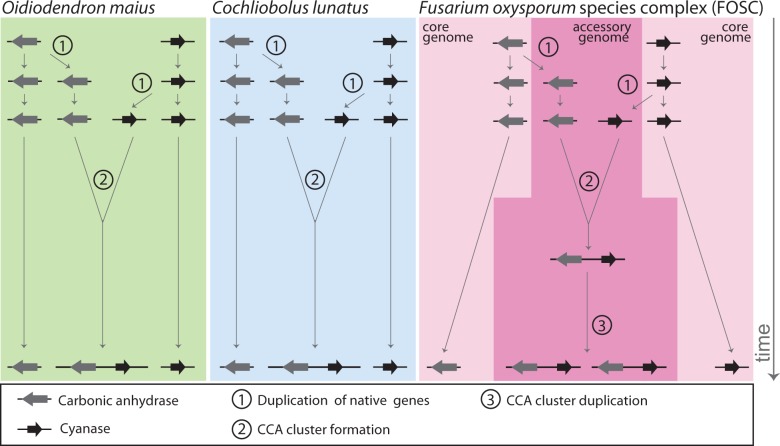Fig. 6.—
A model for the independent origin, through similar mechanisms, of the CCA gene clusters in C. lunatus, O. maius, and the FOSC. (1) The initial step to form a CCA gene cluster is the duplication of both the native cyanase and carbonic anhydrase genes, possibly in response to selection pressure imposed from increased levels of cyanate in the environment. (2) The CCA gene cluster forms when the duplicated cyanase or carbonic anhydrase relocates to the chromosomal location of the complementary duplicate gene. Alternatively, only one of the two genes may be duplicated initially and the CCA cluster forms in place simultaneously with the duplication of the complementary gene. (3) In the FOSC, the CCA gene cluster is consistently located on accessory chromosomes where the entire cluster is frequently duplicated and transferred to additional accessory chromosomes, which appears to facilitate transfer among clonal lineages within the FOSC and may contribute to substantial copy number variation between isolates. Large gray arrows represent the carbonic anhydrase ORF and large black arrows the cyanase ORF, with a thick black line indicating the chromosome. An alternative model in which the CCA gene cluster originated only twice, once in C. lunatus and once in either O. maius or the FOSC, after which it spread to the other species through horizontal transfer, is also consistent with our data.

